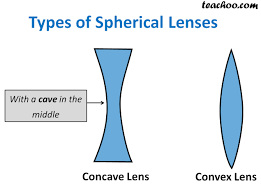Polarization Optical Activity – Physics Notes – For W.B.C.S. Examination.
পোলারাইজেশন অপটিক্যাল ক্রিয়াকলাপ – পদার্থবিজ্ঞানের নোট – WBCS পরীক্ষা।
Optical activity, the ability of a substance to rotate the plane of polarization of a beam of light that is passed through it. (In plane-polarized light, the vibrations of the electric field are confined to a single plane.) The intensity of optical activity is expressed in terms of a quantity, called specific rotation, defined by an equation that relates the angle through which the plane is rotated, the length of the light path through the sample, and the density of the sample (or its concentration if it is present in a solution).Continue Reading Polarization Optical Activity – Physics Notes – For W.B.C.S. Examination.
Because the specific rotation depends upon the temperature and upon the wavelength of the light, these quantities also must be specified. The rotation is assigned a positive value if it is clockwise with respect to an observer facing the light source, negative if counterclockwise. A substance with a positive specific rotation is described as dextrorotatory and denoted by the prefix d or (+); one with a negative specific rotation is levorotatory, designated by the prefix l or (-).
Optical activity was first observed in quartz crystals in 1811 by a French physicist, François Arago. Another French physicist, Jean-Baptiste Biot, found in 1815 that liquid solutions of tartaric acid or of sugar are optically active, as are liquid or vaporous turpentine. Louis Pasteurwas the first to recognize that optical activity arises from the dissymmetric arrangement of atoms in the crystalline structures or in individual molecules of certain compounds.
Brewster’s law, relationship for light waves stating that the maximum polarization (vibration in one plane only) of a ray of light may be achieved by letting the ray fall on a surface of a transparent medium in such a way that the refracted ray makes an angle of 90° with the reflected ray. The law is named after a Scottish physicist, Sir David Brewster, who first proposed it in 1811.
The shows a ray of ordinary (nonpolarized) light of a given wavelength incident on a reflecting surface of a transparent medium (e.g., water or glass). Waves with the electric fieldcomponent vibrating in the plane of the surface are indicated by short lines crossing the ray, and those vibrating at right angles to the surface, by dots. The plane of incidence (AON) is the plane that contains the incident ray and the normal (ON, a line perpendicular to the surface) to the plane of the surface such that they intersect at the surface. Most of the waves of the incident ray will be transmitted across the boundary (the surface of the water or glass) as a refracted ray making an angle r with the normal, the rest being reflected. For a specific angle of incidence (p), called the polarizing angle or Brewster’s angle, all reflected waves will vibrate perpendicular to the plane of incidence (i.e., to the surface), and the reflected ray and the refracted ray will be separated by 90°. Brewster’s law also states that the tangent of the angle of polarization, p, for a wavelength of light passing from one substance to another is equal to the ratio of the refractive indices, n1 and n2, of the two contacting mediums: tan p = n2/n1.
For a light wave passing from air (n1 = 1.00) to glass (n2 = 1.50), the polarizing angle, p, is calculated to be 56°19′.
Please subscribe here to get all future updates on this post/page/category/website


 +919674493673
+919674493673  mailus@wbcsmadeeasy.in
mailus@wbcsmadeeasy.in







































































































